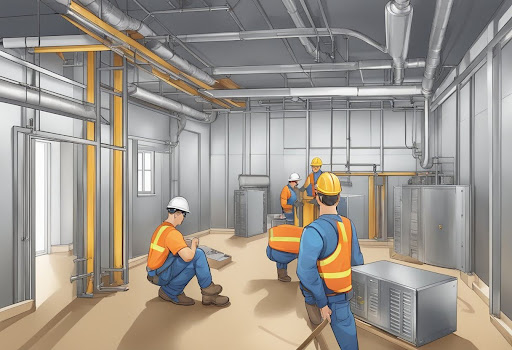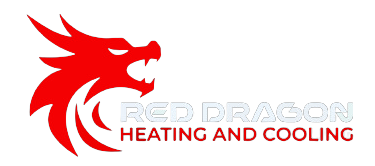- 518.348.9000
- [email protected]
- 117 Van Rd Gloversville,NY 12078
New Construction Ductwork- Furnace- A/C- Zoning Installation: An Expert Guide
Installing new construction ductwork, furnaces, air conditioning units, and zoning systems is a crucial aspect of modern HVAC projects. By integrating these components effectively, buildings can achieve optimal climate control, energy efficiency, and comfort. Proper installation ensures that heating and cooling systems function correctly, distributing air evenly throughout a space.
Key elements of this process include selecting the correct duct size, ensuring tight connections, and using quality materials that can withstand wear and tear. The furnace and A/C units must be carefully matched to the building’s size and usage patterns. Zoning systems can further enhance efficiency by allowing different areas to be heated or cooled independently, reducing energy waste.
These installations require precision and expertise to avoid common issues such as leaks, inefficiency, and poor indoor air quality. Working with skilled professionals ensures that these systems deliver reliable performance and long-term benefits. For homeowners and builders, investing in high-quality HVAC installation is a smart move that pays off in comfort and savings.

518 Red Dragon Service Areas Include :

Amsterdam
Amsterdam New Construction Ductwork- Furnace- A/C- Zoning Installation

Gloversville
Gloversville New Construction Ductwork- Furnace- A/C- Zoning Installation

Johnstown
Johnstown New Construction Ductwork- Furnace- A/C- Zoning Installation

Broadalbin
Broadalbin New Construction Ductwork- Furnace- A/C- Zoning Installation

Fonda
Fonda New Construction Ductwork- Furnace- A/C- Zoning Installation
Mayfield
Mayfield New Construction Ductwork- Furnace- A/C- Zoning Installation
Northville
Northville New Construction Ductwork- Furnace- A/C- Zoning Installation

Planning and Design of Duct work
Careful planning and design of ductwork are essential for ensuring efficient heating, cooling, and air distribution throughout a building. This process involves evaluating specific heating and cooling requirements, selecting appropriate furnace and A/C units, adhering to design principles, and understanding zoning systems.
Evaluating Heating and Cooling Needs
To start, determine the heating and cooling load for the building. Calculate the space’s size, insulation levels, window types, and occupancy. Use these factors to perform a Manual J load calculation. This helps in understanding BTU requirements and avoids over-or under-sizing the system.
Factors like local climate and building orientation impact the load. Considering them ensures the system can handle peak conditions effectively, maximizing comfort and efficiency.
Selecting the Right Furnace and A/C Unit
Choosing the correct furnace and A/C unit requires matching them to the calculated load. Select units that fall within the determined capacity range. Over-sized units cycle on and off more frequently, reducing efficiency, while under-sized units struggle to maintain comfort.
Look for units with high SEER and AFUE ratings. These ratings reflect energy efficiency, leading to lower operating costs and a smaller environmental footprint. A professional HVAC contractor can assist in selecting appropriately sized and rated units.
Ductwork Design Principles
Properly designed ductwork ensures even distribution of air. Follow guidelines for duct sizing, minimizing turns and kinks to reduce resistance. Ensure a balanced supply and return air system for optimal flow.
Use materials like galvanized steel or insulated flexible ducts. Seal all joints and seams with duct mastic or appropriate tape to prevent leaks, maintaining system efficiency and air quality.
Zoning System Basics
Zoning improves comfort by dividing a building into areas with similar heating and cooling needs. Install dampers within the ductwork to control airflow to each zone based on individual requirements. This allows for precise temperature control.
Each zone uses a separate thermostat, communicating with the central control panel. This setup reduces energy waste and enhances comfort by avoiding over-conditioning unoccupied areas. Zoning systems are especially beneficial in larger homes or buildings with varying occupancy patterns.
Installation and Commissioning
Installation begins with assessing the layout. Technicians evaluate the space to determine the placement of ductwork, furnace, and A/C units. This ensures efficient airflow and accessibility for maintenance.
Ductwork installation requires precise measurements. Technicians cut and fit ducts to match the design. They secure connections with screws and seal joints to prevent leaks.
Furnace installation involves positioning the unit in a designated area. It must be level and securely anchored. Connectors are attached to the ducts, and gas lines are hooked up.
For the A/C unit, technicians place it on a concrete pad. They connect it to the inside system with refrigerant lines and electrical wiring. Proper insulation is essential to optimize efficiency.

Zoning installation adds complexity. Technicians install dampers in the ductwork. These dampers control airflow to different zones. Each zone has sensors and thermostats connected to a central control panel.
Commissioning starts with testing each component. Technicians check the ductwork for leaks. They ensure the furnace ignites properly and the A/C cools effectively.
Balancing is critical for zoning systems. Technicians adjust dampers to balance airflow. This ensures each zone reaches the desired temperature.
Final steps involve setting up the control system. Technicians program the thermostat and zoning control panel. They provide instructions for homeowners on operating the system.
Maintenance recommendations are often provided. This includes filter replacement schedules and annual service checks. Proper commissioning ensures long-term reliability and efficiency.
WHAT WE DO
Expert HVAC Care, Always.


Residential Installations
Trust us to transform your space into a haven of perfect climate control with our expert HVAC installations.

Commercial Installations
Trust us to transform your space into a haven of perfect climate control with our expert HVAC installations.

Thermostat Installations
Trust us to transform your space into a haven of perfect climate control with our expert HVAC installations.

Air Quality Solutions
Trust us to transform your space into a haven of perfect climate control with our expert HVAC installations.
